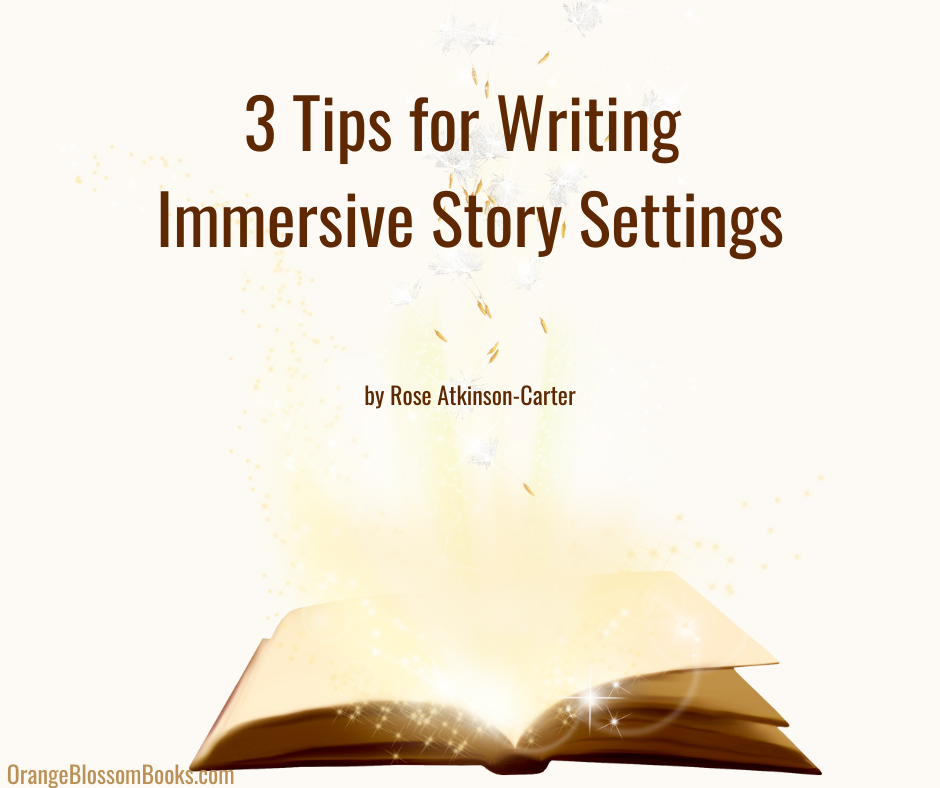|
Guest post by Rose Atkinson-Carter 3 Tips for Writing Immersive Story SettingsThe world of a story is as important as its characters — in many cases, the setting can even become a character during this journey. Truly immersive stories though, evoke different emotions and feelings and remain firmly lodged in our memory long after reaching the ending. To help add this depth to your writing, here are three tips for writing immersive story settings. 1. Capture the right setting for your story.Mountains come and go as easily as train stations when creating worlds on the written page, which is why understanding your ideas with the three levels of story setting in mind is vitally important when creating a fictional world. Temporal setting is the time and period of your story. Whether contemporary, sci-fi and fantasy, or historical, you must pick a specific time for your writing. Environmental setting is the location of your story. Are your characters in outer space or the center of the Earth? In small town Hay, Australia, or in a bustling city like London? Not only do we need to know when we are, but also where. Small town’s are as vivid as big cities, and the personality of your story’s world is defined by your use of it. Individual setting consists of the specific places in your environment. If you’ve written about a small town, is there a supermarket, hairdresser, police station, or pub with locals? Does your big city have train or bus stations in your protagonist’s neighborhood? Your fantasy village lies upon the banks of which river? How are these places important to your story? Combining these three levels of setting helps create unique landscapes to tell your story. 2. Focus on what is unique in your setting.Are you getting carried away with world-building, crafting endless histories for your world, or having fun researching relevant topics? Remember not to lose focus on what’s unique about your world just because you’re having fun discovering it. A great way to keep focused is to understand the setting’s relevance within your story. Are the individual places you’ve written about special to your character? Do they have larger meanings in the story world, or are they placeholders towards other scenes? A unique setting should have a unique purpose for your idea. If settings appear irrelevant under scrutiny, flesh them out to improve individuality and relevancy. 3. Use senses to draw the reader in.Just as all good creative writing classes suggest, a well-timed sensory bomb triggers a rush of emotions for the reader. Which not only heightens a scene but also links a story to unlocked memories. Smell, in particular, is a powerful stimulant. A cold ocean brings gooseflesh and the scents of salt and seaweed. Meanwhile, a burnt hand stings and singed hair nauseates, staining our mind with the unpleasant experience. The more you combine sensory experiences in your setting, the more vivid your fictional world becomes to the character and reader. As your character discovers the sights, sounds, smells, and feeling of their world, so should we. Think of your book as a blank canvas. By the end of the story, your reader should see an engaging world full of life before them, and also feel as if they have experienced the journey which dipping below your book’s cover brings. Rose Atkinson-Carter is a writer with Reedsy, a marketplace and blog that helps authors with everything from preparing for NaNoWriMo to using book templates to format their books.
0 Comments
Leave a Reply. |
AuthorArielle Haughee is the owner and founder of Orange Blossom Publishing. Categories
All
|
Proudly powered by Weebly


 RSS Feed
RSS Feed